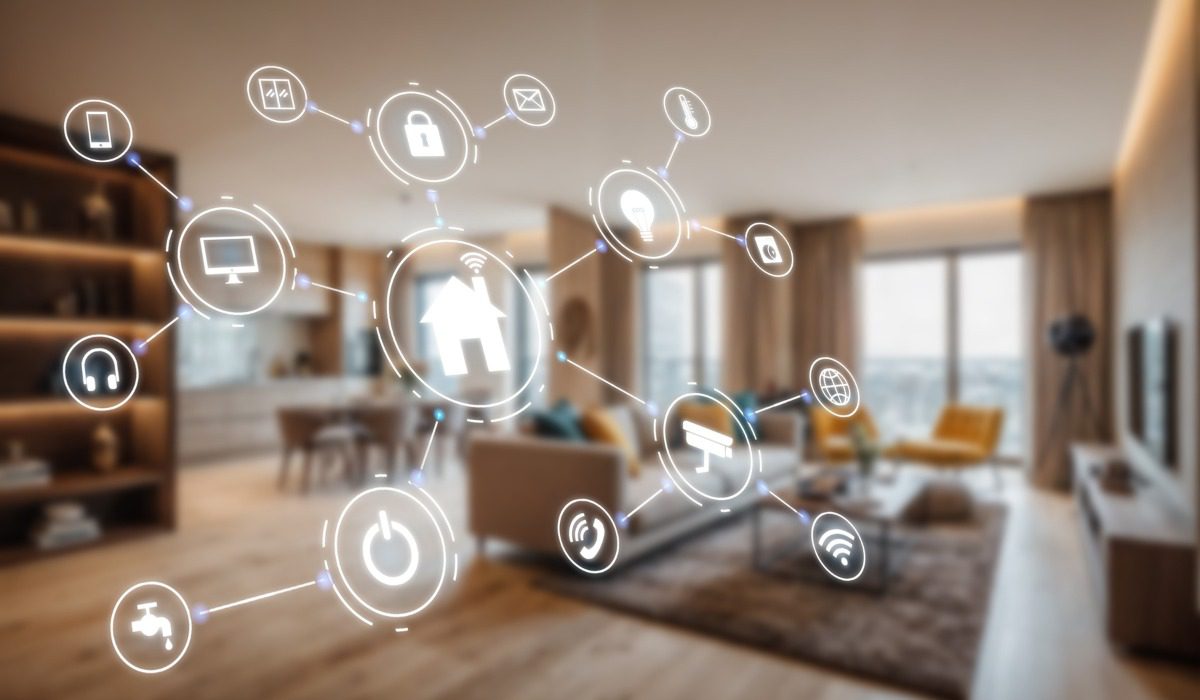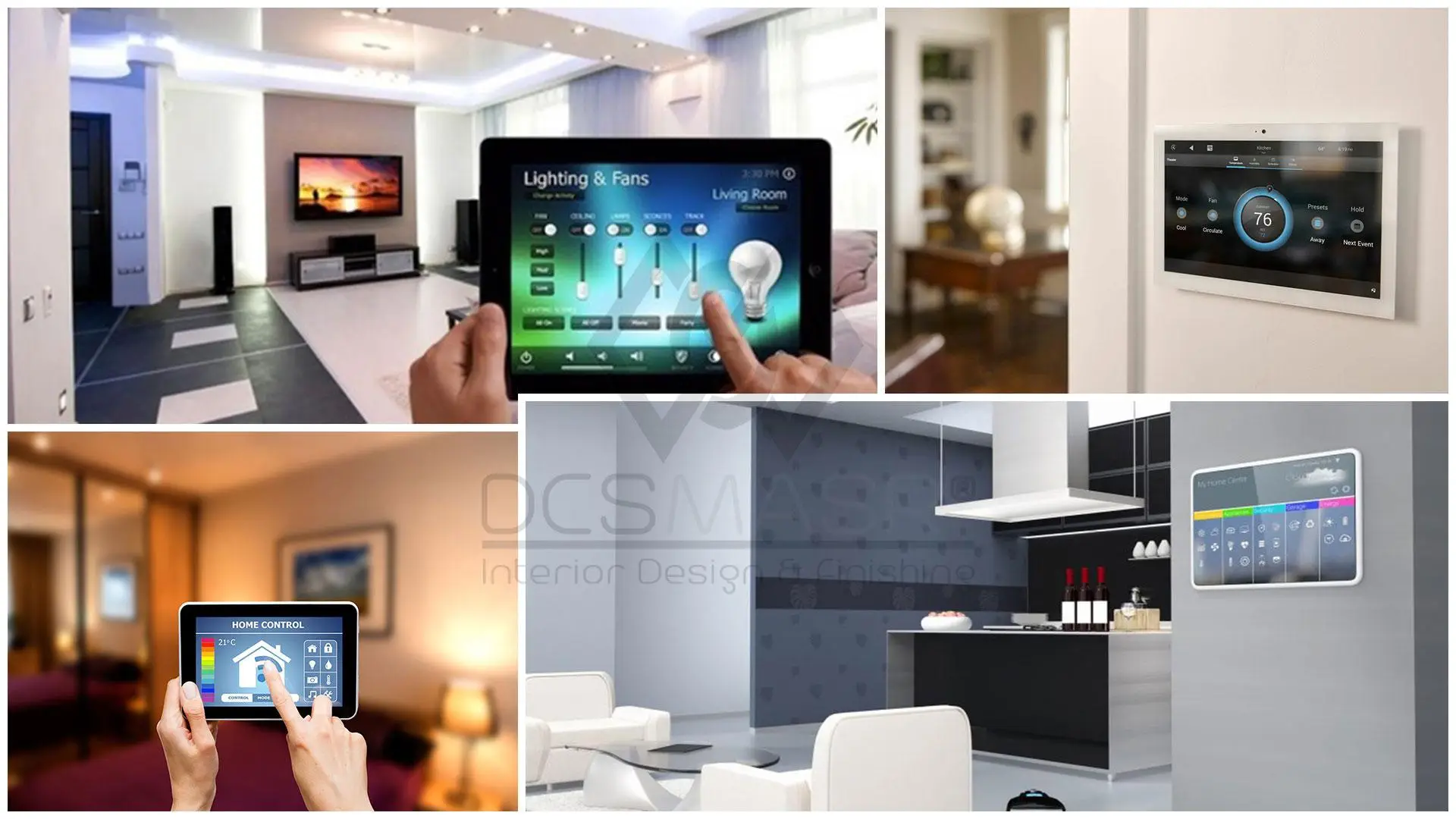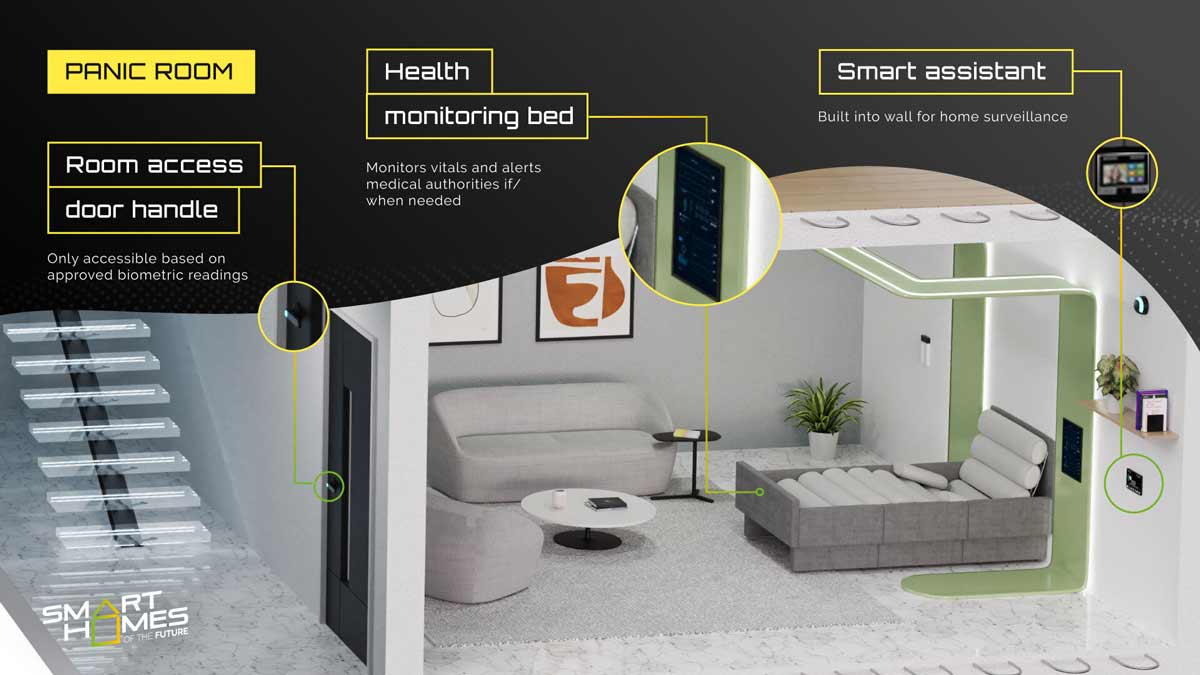Introduction: Why the Smart Kitchen is the Future of Home Cooking
The kitchen has always been the heart of the home, but with the rise of the Internet of Things (IoT), it’s becoming smarter, more efficient, and incredibly convenient. Imagine a kitchen that not only helps you cook delicious meals but also cleans itself and automatically restocks your pantry. Thanks to smart kitchen devices, this vision is already a reality for many households in 2025.
With smart refrigerators that track your groceries, voice-activated ovens that follow recipes precisely, and robotic vacuums that keep your floors spotless, the smart kitchen is transforming everyday chores into seamless experiences. Whether you’re a busy professional, a home chef, or someone who just loves tech, smart kitchen devices promise to save time, reduce waste, and make cooking fun again.
In this article, we explore the best IoT devices that cook, clean, and order for you — and how to integrate them into your kitchen for maximum convenience and efficiency.
1. Smart Refrigerators: The Intelligent Food Managers
What Makes a Refrigerator “Smart”?
Smart refrigerators are much more than just cold storage. Equipped with internal cameras, touchscreen interfaces, Wi-Fi connectivity, and AI-powered inventory tracking, these fridges monitor what’s inside, suggest recipes based on your available ingredients, and even remind you when food is about to expire.
Popular Features :
-
Inventory tracking & alerts
-
Automatic grocery ordering
-
Energy-efficient modes
-
Family communication hub with calendars and notes
-
Voice assistant integration (Alexa, Google Assistant, etc.)
Example Device: Samsung Family Hub Refrigerator
The Samsung Family Hub offers a vibrant touchscreen door that acts as a smart control center, letting users peek inside remotely via smartphone, display recipes, stream music, and more. Its integration with smart home systems makes it a central command point for your kitchen.
Table 1: Smart Refrigerator Features & Price Range
| Feature | Description | Approximate Cost |
|---|---|---|
| Internal Cameras | Check fridge contents remotely | Included |
| Touchscreen Interface | Control and interact with fridge apps | Included |
| Grocery Inventory Tracking | Tracks items & expiry dates | Included |
| Automatic Ordering | Syncs with grocery delivery services | Depends on service |
| Voice Assistant Integration | Alexa, Google Assistant compatible | Included |
| Energy-Saving Technology | Optimizes power usage | Included |
| Price Range | $1,500 – $4,000+ |
2. Smart Ovens and Cooktops: Precision Cooking Made Easy
How Smart Ovens Transform Cooking
Smart ovens come with Wi-Fi connectivity, remote control, and AI-driven cooking programs that adjust temperature and time based on the recipe. Many also feature built-in cameras so you can monitor your cooking progress from your smartphone.
Features to Look For
-
Voice control and smartphone app integration
-
Recipe-guided cooking with automated adjustments
-
Multi-zone cooking capability
-
Self-cleaning modes

WhatIstheInternetofThings
Example Device: June Oven
The June Oven uses computer vision to recognize food and suggests cooking programs automatically. It connects to your phone to send alerts and allows remote preheating or temperature adjustments.
Table 2: Smart Oven Features & Price Range
| Feature | Description | Approximate Cost |
|---|---|---|
| Food Recognition | AI identifies food and suggests cooking | Included |
| Remote Monitoring | View cooking progress via app | Included |
| Voice & App Control | Hands-free and remote operation | Included |
| Self-Cleaning Function | Automated cleaning cycles | Included |
| Multi-Zone Cooking | Cook multiple dishes at once | Some models |
| Price Range | $1,000 – $3,500+ |
3. Robotic Kitchen Helpers: The Future of Cleaning
Cleaning Made Effortless
From robotic vacuums that clean kitchen floors daily to smart dishwashers that optimize water and detergent usage, IoT devices make kitchen cleaning easier and more eco-friendly.
Highlighted Devices
-
Robotic Vacuum Cleaners: Automatic floor cleaning, scheduled or app-controlled
-
Smart Dishwashers: Sensors detect dirt levels and adjust cycles accordingly
-
Automatic Trash Bins: Hands-free operation with sensors for trash level detection and sealing
Example Device: iRobot Roomba j7+
The Roomba j7+ features advanced navigation, obstacle avoidance, and automatic dirt disposal. With smart mapping, it cleans efficiently around kitchen furniture and spills.
Table 3: Robotic Kitchen Cleaning Devices & Price Range
| Device Type | Features | Approximate Cost |
|---|---|---|
| Robotic Vacuum | Auto scheduling, smart mapping, obstacle avoidance | $300 – $900 |
| Smart Dishwasher | Soil sensors, app monitoring, energy efficient | $700 – $1,500 |
| Automatic Trash Bin | Sensor lid, bag sealing, odor control | $100 – $400 |
Smart Pantry Management, Grocery Ordering, and Connected Beverage Systems
4. Smart Pantry Management: Never Run Out of Essentials Again
How Smart Pantries Work
Smart pantry systems use sensors and connected containers to monitor food quantities and expiration dates, automatically updating inventory lists. Some come with built-in cameras that let you check your pantry contents remotely, helping avoid last-minute store runs.
By linking your smart pantry with your refrigerator and grocery delivery apps, you can streamline meal planning and ensure you never run out of staples like flour, sugar, or spices.
Features to Consider
-
Weight or RFID sensors on containers
-
Mobile app integration for inventory tracking
-
Automatic reorder triggers
-
Expiration date alerts and recipe suggestions based on available ingredients
Example Device: PantryChic Smart Storage Containers
PantryChic containers have built-in weight sensors and Bluetooth connectivity that sync with your smartphone. The app notifies you when supplies are low and can automatically reorder items from partnered grocery stores.
Table 4: Smart Pantry Systems Features & Price Range
| Feature | Description | Approximate Cost |
|---|---|---|
| Weight Sensors | Detect quantity changes automatically | Included |
| RFID Tagging | For easy item identification | Some models |
| Mobile App Integration | Real-time inventory updates | Included |
| Automatic Reordering | Sync with grocery apps for auto orders | Service-dependent |
| Expiration Alerts | Notifications before food expires | Included |
| Price Range | $100 – $400 |

The Rise of Connected Homes: Inside the IoT Revolution
5. Automated Grocery Ordering: Simplifying Your Shopping List
From Manual Lists to Hands-Free Restocking
IoT-enabled kitchen devices now integrate directly with grocery delivery services like Amazon Fresh, Instacart, and Walmart+. This means your fridge or pantry can automatically send orders when essentials run low — all without you lifting a finger.
By customizing preferences, setting budgets, and prioritizing delivery windows, smart kitchens optimize your grocery shopping experience, reducing food waste and saving you time.
Benefits
-
Avoid last-minute store trips
-
Reduce food spoilage by timely restocking
-
Save time with scheduled deliveries
-
Customize shopping preferences and dietary needs
Example: Amazon Dash Replenishment
Amazon Dash Replenishment integrates with compatible appliances to reorder products automatically. For instance, a smart coffee maker might reorder coffee pods when supplies run low.
Table 5: Popular Grocery Ordering Integrations & Costs
| Service | Features | Cost Model |
|---|---|---|
| Amazon Dash Replenishment | Automatic product ordering from device | Included with product |
| Instacart API Integration | Schedule delivery, customize orders | Delivery fees apply |
| Walmart+ Smart Reordering | Sync devices for automatic restock | Subscription + fees |
| Subscription Boxes | Curated deliveries based on preferences | Monthly fee |
6. Connected Coffee Makers & Beverage Systems: Your Personal Barista
Brewing Perfection at Your Command
Smart coffee makers are among the most popular IoT devices for kitchens, offering app and voice control, programmable brew times, and personalized coffee strength settings. Some models can order beans or pods automatically, ensuring you never run out of your favorite blend.
Beyond coffee, smart beverage systems now include tea brewers, soda makers, and even wine chillers — all connected and customizable.
Highlighted Features
-
Remote brewing and scheduling
-
Personalized drink recipes and strength
-
Automatic supply ordering (coffee beans, filters, pods)
-
Integration with smart assistants for voice commands
Example Device: Behmor Connected Coffee Maker
The Behmor Connected lets users schedule brews, adjust temperature and pre-soak times via app or voice control, and tracks supply levels for automatic ordering.

Telegraph-house-IoT Devices Improve
Table 6: Smart Beverage Devices Features & Price Range
| Feature | Description | Approximate Cost |
|---|---|---|
| Remote Brew Scheduling | Set brew times from smartphone | Included |
| Customizable Strength | Adjust coffee strength and temperature | Included |
| Automatic Supply Ordering | Replenish beans, pods, filters | Service-dependent |
| Voice Assistant Control | Alexa, Google Assistant compatible | Included |
| Price Range | $150 – $500 |
What’s Coming Next?
In the upcoming parts, we will explore:
-
The power of kitchen automation and voice control
-
How to integrate all your smart devices into one seamless ecosystem
-
Real-world case studies on smart kitchens transforming daily life
Automation, Voice Control, and Smart Kitchen Integration
7. Kitchen Automation: Effortless Cooking and Cleaning
What Is Kitchen Automation?
Kitchen automation uses connected devices and smart appliances programmed to perform routine tasks without manual intervention. This can include everything from preheating your oven remotely to scheduling your dishwasher or adjusting lighting based on cooking phases.
By automating repetitive chores, smart kitchens save time, reduce energy waste, and enhance cooking precision — making every meal easier to prepare.
Examples of Automated Kitchen Tasks
-
Preheating ovens or grills from your phone
-
Automatic stove shutoff after a preset time
-
Dishwasher start/stop scheduling
-
Smart lighting that adjusts based on time of day or cooking mode
-
Automatic coffee brewing at wake-up time
Popular Devices Supporting Automation
-
June Oven: A smart convection oven with automatic cooking programs and remote control.
-
Samsung SmartThings Appliances: Including ovens, refrigerators, and dishwashers that integrate with automation routines.
-
Philips Hue Kitchen Lighting: Adjustable lighting scenes for cooking and dining ambiance.
Table 7: Automation Features & Supported Devices
| Automation Feature | Description | Supported Devices | Approximate Price |
|---|---|---|---|
| Remote Oven Preheat | Start oven preheating via app | June Oven, Samsung Ovens | $400 – $1500 |
| Stove Auto Shutoff | Timer-based automatic shutoff | Smart stove models, add-ons | $100 – $300 |
| Dishwasher Scheduling | Set start/stop times remotely | Samsung, Bosch smart dishwashers | $500 – $1200 |
| Adaptive Lighting | Adjust brightness/color via sensors | Philips Hue, LIFX | $50 – $200 per bulb |
8. Voice Control: Hands-Free Convenience in the Kitchen
Why Voice Assistants Matter in Smart Kitchens
Voice assistants like Amazon Alexa, Google Assistant, and Apple Siri offer a hands-free way to control kitchen devices, check recipes, set timers, and manage grocery lists — all while your hands are busy cooking.
These assistants integrate seamlessly with most IoT kitchen appliances, enabling quick commands for faster, safer, and more enjoyable cooking experiences.
Use Cases for Voice Control
-
“Alexa, preheat the oven to 350 degrees.”
-
“Hey Google, start the dishwasher.”
-
“Siri, add eggs and milk to my grocery list.”
-
“Alexa, set a timer for 10 minutes.”
-
“Hey Google, play my cooking playlist.”
Popular Voice-Enabled Kitchen Devices
-
Amazon Echo Show: With screen for recipes and video calls while cooking.
-
Google Nest Hub: Displays visual cooking instructions and appliance controls.
-
Apple HomePod: For Siri-powered voice commands and smart home control.
Table 8: Voice Assistant Compatibility and Features
| Voice Assistant | Compatible Devices | Unique Features | Supported Platforms |
|---|---|---|---|
| Amazon Alexa | Smart ovens, lights, speakers | Skills marketplace, routines | Android, iOS, Echo devices |
| Google Assistant | Smart displays, thermostats | Visual responses on Nest Hub | Android, iOS, Google Home |
| Apple Siri | HomeKit-enabled devices | Privacy-focused, deep iOS integration | iOS, MacOS, HomePod |
9. Integrating Your Smart Kitchen: Creating a Connected Ecosystem
The Importance of Integration
The true power of a smart kitchen lies in how all your devices work together harmoniously. Integration platforms like Samsung SmartThings, Apple HomeKit, and Google Home unify control, allowing you to automate multi-device actions and manage everything from one app or voice command.
For example, a “Good Morning” routine can simultaneously turn on kitchen lights, start the coffee maker, and adjust the thermostat.
Tips for Seamless Integration
-
Choose devices compatible with your preferred ecosystem (Alexa, Google, Apple).
-
Use automation hubs or smart displays for centralized control.
-
Set up routines and scenes to automate common tasks.
-
Keep firmware updated to ensure smooth connectivity.
Example Ecosystem: Samsung SmartThings Kitchen Setup
Samsung SmartThings supports appliances like smart refrigerators, ovens, dishwashers, and lighting. The platform lets you monitor inventory, receive maintenance alerts, and create multi-step automations.
Table 9: Popular Smart Kitchen Ecosystems Comparison
| Ecosystem | Compatible Devices | Strengths | Cost |
|---|---|---|---|
| Samsung SmartThings | Appliances, lights, sensors | Wide device support, powerful automations | Free app, device-dependent |
| Apple HomeKit | HomeKit-certified devices | Strong privacy, seamless iOS integration | Free app, device-dependent |
| Google Home | Broad range of smart devices | Intuitive voice control, Google services | Free app, device-dependent |

Latest-smart-home-trends-that-define-futurtistic-way-of-living-f
Case Studies, Cost-Benefit Analysis, and Future Trends
10. Real-Life Case Studies: Smart Kitchens in Action
Case Study 1: The Johnson Family’s Connected Kitchen
The Johnson family upgraded their traditional kitchen with:
-
Smart refrigerator (Samsung Family Hub)
-
Voice-enabled oven (June Oven)
-
Automated dishwasher (Bosch Home Connect)
-
Smart lighting (Philips Hue)
-
Amazon Echo Show for voice control
Results:
-
Reduced meal prep time by 25%
-
Dishwasher cycles scheduled for off-peak energy hours, cutting electricity bills by 12%
-
Real-time grocery management via fridge touchscreen reduced food waste by 30%
-
Voice commands improved multitasking efficiency and safety
Case Study 2: Apartment Smart Kitchen Integration in NYC
In a 700 sq. ft. apartment, a tech enthusiast installed:
-
Compact smart appliances (Instant Pot Smart WiFi, smart coffee maker)
-
Google Nest Hub for recipe guidance and device control
-
Automated lighting and smart plugs to control small appliances remotely
Results:
-
Saved over 5 hours weekly on cooking and cleaning
-
Reduced energy costs by 15% with smart scheduling
-
Increased convenience and reduced clutter via centralized control
11. Cost-Benefit Analysis: Is a Smart Kitchen Worth It?
Initial Investment vs. Long-Term Savings
| Device | Approximate Cost | Average Annual Savings | Payback Period (Years) |
|---|---|---|---|
| Smart Refrigerator | $2,000 – $4,000 | $100 (energy + food) | 20 – 40 |
| Smart Oven | $400 – $1,500 | $50 (energy + time) | 8 – 30 |
| Automated Dishwasher | $500 – $1,200 | $40 (energy + water) | 12 – 30 |
| Voice Assistants | $50 – $250 | Indirect benefits | N/A |
| Smart Lighting | $50 per bulb | $20 (energy) | 2 – 5 |
| Smart Plugs & Sensors | $20 – $50 each | $10 (energy) | 2 – 5 |
Intangible Benefits
-
Enhanced convenience and lifestyle quality
-
Increased home safety and security
-
Environmental impact through energy savings
-
Resale value increase for smart-enabled homes
12. Future Trends: What’s Next for Smart Kitchens?
1. AI-Powered Cooking Assistants
AI will analyze your pantry, dietary preferences, and health goals to suggest recipes and adjust cooking processes automatically.
2. Fully Integrated Food Inventory Management
Smart refrigerators will automatically order groceries as supplies run low, integrating with local delivery services and meal planning apps.
3. Advanced Sensors for Food Freshness
IoT sensors will monitor food freshness and notify you before expiration, minimizing waste.
4. Voice and Gesture Control Evolution
Next-gen voice recognition and gesture controls will enable even more intuitive, hands-free kitchen management.
5. Sustainable and Energy-Efficient Appliances
Future smart kitchens will focus more on sustainability with solar-powered devices and advanced energy-saving modes.

How IoT Devices Are Transforming Modern Home Life in 2025
Table 10: Emerging Smart Kitchen Technologies and Projected Adoption (2025-2030)
| Technology | Description | Adoption Rate Projection | Expected Impact |
|---|---|---|---|
| AI Cooking Assistants | Personalized AI chefs | 40% by 2030 | Simplifies meal prep, nutrition |
| Automated Grocery Ordering | Inventory tracking & auto ordering | 60% by 2028 | Reduces food waste |
| Food Freshness Sensors | IoT freshness monitoring | 50% by 2029 | Minimizes spoilage |
| Gesture Controls | Touchless device operation | 35% by 2030 | Enhances hygiene & convenience |
| Sustainable Smart Appliances | Solar and energy-efficient tech | 45% by 2030 | Lowers carbon footprint |
FAQs, Summary, Action Steps, and Final Thoughts
Frequently Asked Questions (FAQs)
1. What are the key benefits of installing IoT devices in the kitchen?
IoT devices enhance convenience, save time and energy, reduce food waste, improve safety, and enable better meal planning.
2. Which smart kitchen device should I buy first?
Start with a smart assistant like Amazon Echo or Google Nest Hub to control other devices hands-free, then add smart lighting or a smart fridge depending on your budget.
3. How secure are smart kitchen devices?
Security varies; choose devices with strong encryption, regularly update firmware, and secure your Wi-Fi with strong passwords.
4. Can smart kitchens reduce my energy bills?
Yes. Devices optimize energy use by scheduling appliance operation during off-peak hours and using sensors to prevent waste.
5. Where can I buy reliable smart kitchen appliances?
Trusted retailers include Amazon, Best Buy, and manufacturer websites like Samsung, Bosch, and June Oven.
6. Who benefits the most from a smart kitchen?
Busy professionals, families aiming to reduce food waste, elderly users needing convenience, and tech enthusiasts.
7. When is the best time to upgrade to a smart kitchen?
During kitchen renovations or when appliances need replacement is ideal for integrating IoT devices seamlessly.
8. How do smart refrigerators help with grocery shopping?
They track inventory, suggest recipes based on contents, and can automatically order groceries when supplies run low.
9. What are common challenges with smart kitchens?
Compatibility issues, high initial costs, learning curves, and security risks if not managed properly.
10. How does automation improve kitchen hygiene?
Touchless controls and scheduled cleaning cycles reduce contact points, minimizing contamination risks.
Summary
IoT technology is revolutionizing kitchens by automating cooking, cleaning, and grocery management. From smart refrigerators that monitor food inventory to voice-controlled ovens and robotic dishwashers, smart kitchens deliver unprecedented convenience and efficiency. While initial investments can be significant, the long-term savings on energy and reduced food waste, along with enhanced quality of life, make the transition worthwhile. Future trends like AI chefs and sustainability-focused appliances promise even greater innovation ahead.

What_is_IoT
Actionable Next Steps to Create Your Smart Kitchen
-
Assess Your Needs and Budget: Determine which tasks you want to automate (cooking, cleaning, grocery management) and set a budget.
-
Start Small: Begin with a smart assistant device to centralize control.
-
Choose Compatible Devices: Ensure all IoT devices you buy are compatible with your preferred smart home ecosystem (Amazon Alexa, Google Assistant, Apple HomeKit).
-
Secure Your Network: Use a strong password and enable two-factor authentication on your home Wi-Fi.
-
Plan Appliance Replacement: Integrate smart devices gradually during appliance upgrades.
-
Explore Energy Savings: Use smart plugs and sensors to monitor and optimize energy consumption.
-
Experiment and Learn: Use apps and tutorials to familiarize yourself with device features.
-
Monitor Usage: Track your energy bills and grocery expenses before and after installation.
-
Stay Updated: Keep devices’ firmware and apps updated for security and new features.
-
Connect With Communities: Join smart home forums and social media groups for tips and troubleshooting.
What to Do in the Future After Building Your Smart Kitchen
1. Keep Up with Technology Updates
Regularly update your IoT devices’ firmware and apps to access new features, improve security, and fix bugs.
2. Expand Your Smart Ecosystem
Add complementary devices like smart lighting, smart speakers, or smart trash cans to enhance automation and convenience beyond the kitchen.
3. Monitor and Optimize Energy Usage
Use smart meters or energy-monitoring apps to track consumption and adjust your device settings to save on utility bills.
4. Integrate Voice and AI Assistants More Deeply
Explore advanced voice commands and AI integrations that can suggest recipes based on your diet or automatically reorder groceries.
5. Explore Sustainable Options
Adopt energy-efficient appliances and IoT solutions focused on reducing food waste and water usage.
6. Personalize Your Automation
Set up routines and scenes tailored to your lifestyle — for example, “morning coffee prep” or “family dinner mode” with lighting and appliance settings.
7. Stay Security-Savvy
Regularly review your network and device security. Change passwords periodically and consider a dedicated IoT security solution.
8. Engage with Smart Home Communities
Join forums, social media groups, or attend expos to discover new devices, get tips, and solve problems.
9. Educate Family Members
Make sure everyone in your household knows how to use the devices safely and efficiently.
10. Plan for Future Upgrades
Technology evolves fast — budget and plan for device upgrades or new innovations that can further enhance your kitchen.
Final Thoughts
The smart kitchen is no longer a futuristic concept but an achievable reality for most households. Embracing IoT devices can transform your cooking and cleaning routines, making your home more efficient, enjoyable, and eco-friendly. Whether you’re a novice or a tech-savvy homeowner, building a connected kitchen tailored to your lifestyle can bring lasting benefits. The future of cooking and home management is smart, connected, and designed to simplify your everyday life.


